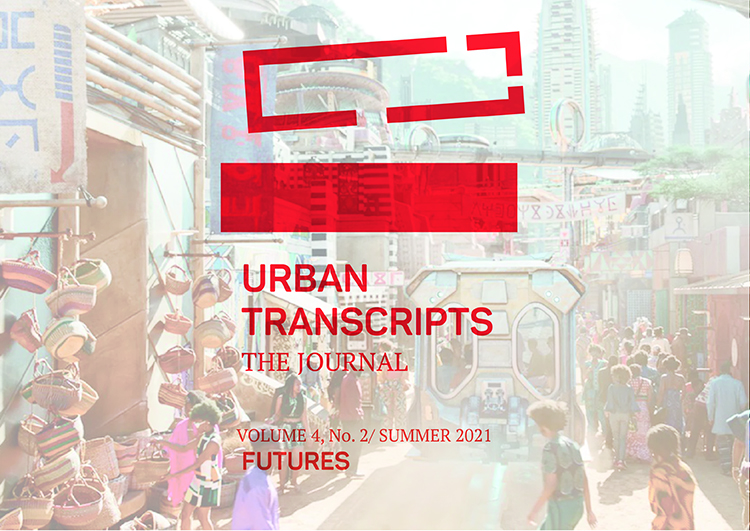Annual CO2 emissions are now 45% higher than they were at the dawn of the millennium and 500% higher than the 1950s1. Carbon emissions from the richest 1% more than double the emissions of the poorest half of humanity2. Scientists warn of “untold human suffering” without deep and lasting shifts in our ways of life3. Our lifestyles, our homes and our cities, are contributing to our very own extinction. Across the world, activists, policy makers, scientists, along with an ever-increasing number of institutions, from the UN to local governments, call for urgent action to reverse an ever worsening planetary environmental crisis whose effects are disproportionately felt in the Global South.
While there exists broad consensus around the impacts of the crisis, evidenced by science over many decades—forum after forum, report after report, climate change research is alarmingly warning us of the looming tragedy—it is hesitation, disagreement, and conflict that characterise the discourse around how to fix it. The quasi-universal adoption of the language of sustainability across politics, business, and civil society, masks different worldviews that lie at the very core of the various solutions proposed. Anthropocentric attitudes to the environment, valuing nature for the sake of its benefits to humans, are opposed to ecocentrism, valuing nature for its own sake. Across both paradigms, prosperity, human- or nature-centred, is understood and guided by different units of measurement of what is valuable; wellbeing indicators, human-development indexes, and social value metrics, are challenging GDP-measured economic growth. We have rebranded growth as sustainable growth and sustainable development, does our refusal to let go of a model based on endless growth leave enough room for regeneration?
Cities are at the heart of the environmental crisis. Urban growth shows no signs of slowing down, the world’s urban population is 9 times larger than it was a century ago, more than half of us live in cities; cities consume two thirds of the world’s energy and create more than 70% of global carbon emissions. Cities have also come to define our culture, shaped our ways of life and work, our relationships with one-another and the very ways we engage and interact with nature and the economy. Critically, despite the global and trans-national scale of the environmental challenge, urban communities, activists, city leaders, and inter-city networks have been at the forefront of redefining our still extractive relationships with the environment, long before ‘sustainable development’ appeared on the agendas of nation states, transnational organisations, and inter-state treaties.
Few trans-national institutions are as committed to global prosperity as the World Economic Forum, an international NGO founded in 1971 “committed to improving the state of the world by engaging business, political, academic, and other leaders of society to shape global, regional, and industry agendas”. Its annual meetings in the mountain resort of Davos, Switzerland, are an illustrative reflection of the priorities and ideologies of global power in response to the environmental challenge. In the light of the systemic inequalities that the pandemic laid bare and its uneven impact on people’s lives across the world, the 2021 Davos meeting in January, stressed yet again the need and the urgency for solutions to the crisis: the urgency to act and support renewable energy; the role of technology and education in creating opportunities and moving towards greener industries; the importance of cities to reinvent themselves through circular economy, innovation in transportation, sustainable and resilient built environment and affordable housing; lastly, the importance to act as one community and focus on the rising opportunity to innovate and collaborate despite the complexity of the world we live in. Indeed, the world’s leaders and decision makers are acknowledging the need to move to a carbon-zero economy via a socially just transition. Are we then moving towards a regenerative culture and economy with cities that can regenerate themselves and enable us to thrive in a post-growth era?
One of the most interesting sessions that took place was on Restoring Economic Growth. Christine Lagarde, the President of the European Central Bank and former chief of the International Monetary Fund, spoke of a new sustainable economy that takes into consideration the environmental crisis. We need, she says, to “include a pricing mechanism that reflects the reality of the cost of climate change and the impact on our environment, to inform how we reach the targets, and invest in innovation”. Peter Altmaier, the German Minister for Economic Affairs and Energy, praised green hydrogen as the missing link of the energy transition and how “we have to regain trust in Europe’s industrial capacity and capacity to compete”. Bruno Le Maire, French Minister of Economy and Finance, urged that “we need to keep investing in new technologies otherwise we run the risk of dropping out from the technological race of the 21st century”. Herbert Diess, chief executive of Volkswagen, argued that reaching the targets set to lower carbon emissions “an opportunity for innovation” as long as “the market stays open, and the supply chains remain intact”. And David Solomon, chief executive and chairman of Goldman Sachs, called for the need to “think about policy that is sustainable, that brings more people along, that creates the right distribution but also allows the free markets to innovate, bring investment capital into places, new technologies and spur growth and get that balance right”.
The underlying logic of Davos and its participants, illustrative of the logic embedded in the levers of global power from which the voices and representation of cities and their citizens are often largely absent, is one of sustainable growth based on technological innovation and green energy as the key enablers of an ultimate reduction of carbon emission and a transition to net-zero. In circulation over the past few decades, ideas around the green economy and sustainable growth have developed around the assumption that we can have economic growth without its negative impacts on the environment, eco-economic decoupling, and wisely use technology and innovation to save both the economy and the earth. The narrative haunting the sustainability discourse still fails to let go of growth as a sacrosanct objective of our (urban) culture as much as it fails to broaden its understanding of prosperity to much else than economic output measured in the unit of money. Environmental and social benefits are measured in terms of how much money they eventually save us and their ‘return on investment’; carbon dioxide emissions are traded between countries and between companies; polluting industries buy their environmental and social responsibility as ‘green investments’ – sustainability ultimately becomes operationalised to support economic output as the primary indicator of our prosperity.
Policies and technological innovations forged through these ideas have not managed to put a halt to environmental collapse and neither have they effectively considered, less so addressed, the uneven distribution of such growth and the unequal burdens of ecological destruction on the world’s populations. In one of the earliest examples of how green technology results in an overall decrease of sustainability, economist William Stanley Jevons in 1865 noticed that when a more efficient steam engine was introduced more coal, not less, was also consumed. Efficiency savings were being reinvested to increase production causing prices to fall and demand to rise resulting in a “rebound effect” and ultimately increasing not reducing the deman for coal. There is no denying that technology and innovation have a role to play, what is questionable is whether they can reverse environmental collapse if the are relegated to acting as agents in the service of a system geared towards ever-increasing growth.
It is difficult to stop our obsession with growth. Yet in nature nothing grows forever. While we often think of growth as life itself, life is defined by a cycle of growth, maturity, decline and regeneration. Critique of economic growth and its metrics comes from within economics itself. Oxford economist and author of Doughnut Economics, Kate Raworth, argues that growth is incompatible with life on a thriving planet. She is not alone in arguing that we need to value our natural wealth using nature’s metrics and our social wellbeing using social metrics, to stop equating economic growth with the purpose of our culture and re-engineer our world towards regeneration. In Sacred Economics, Charles Eisenstein, a public speaker and author, reflecting on the economy of ecosystems observes that “in nature, headlong growth and all-out competition are features of immature ecosystems, followed by complex interdependence, symbiosis, cooperation, and the cycling of resources”. He argues that the next stage of the economy will parallel nature, encouraging cooperation and circulation over competition and hoarding.
Outlining a concept of regenerative cities in its 2010 report, the World Future Council, argues that “regenerative urban development is about creating a fairer, restorative relationship between cities and the world beyond, utilising appropriate technologies, policies and business practices, and building vibrant new local economies in the process”. For Herbert Girardet, WFC co-founder, the transition to net-zero passes through a remodelling of the city from a linear metabolism that constantly requires new resources and produces waste and pollution to a circular metabolism that functions through renewable resources including water and energy, material and waste recycling, and a harmonious relationship with regional ecosystems.
What becomes more and more apparent is the need for structural change at systems level. And what better system to start from than the city. From progressive city leadership to the grassroots, there is emerging a new culture shaped by systems-level innovations that reimagine prosperity beyond the sustainable growth and green technology paradigm. Initiatives such as Barcelona’s seizure of empty apartments, Amsterdam’s restriction of AirBnB, and Berlin’s rent freeze for more than 1 million properties, are underpinned by a shift of priorities away from economic growth and towards an urban economy serving social well being. Urban agriculture schemes are prioritising small-scale locally and organically produced food, employing local people, over the economically efficient international food supply chains. Community land trusts collectively owning, managing and developing land, are replacing the generation of profit from the land-to-housing process with the generation of affordable housing. Collaborative governance initiatives, such as Bologna’s collaboration pacts, are a promising step in citizens developping means to reclaim effective control over the resources of their city, abandoned buildings, parks, and public spaces, using them for community needs.
Regenerative cities on a thriving planet will be enabled not by technological innovation but by a societal shift towards a new set of values. For these regenerative cultures to successfully revive our world, cities need to be recognised not as the problem we are trying to solve, not only as the source of meaningful citizen-led innovation, but as the fully enabled agents of change: we need a Davos of cities, an anti-Davos, from the grassroots to their leaders, to reimagine what a prosperous city can be and trace the journey to get there.
Notes
1. OurWordInData.org, 2017, “CO₂ and Greenhouse Gas Emissions”, [online]. Available at: https://ourworldindata.org/co2-and-other-greenhouse-gas-emissions
2. Oxfam International, 2020, “Confronting carbon inequality: Putting climate justice at the heart of the COVID-19 recovery”, [online]. Available at: https://www.oxfam.org/en/research/confronting-carbon-inequality
3. ScienceDaily, 2019, “Scientists declare climate emergency, establish global indicators for effective action“, [online]. Available at: https://www.sciencedaily.com/releases/2019/11/191105104422.htm
+
Cover image photo: Prefabricated housing development, Marzahn, Berlin. Source: Sara King.
Published as an editorial in the Regenerative Cities - Regenerative Cultures issue of The Urban Transcripts Journal, Volume 4, no. 1 Spring 2021.





